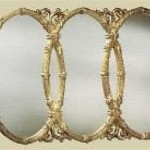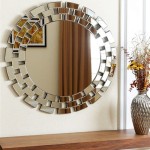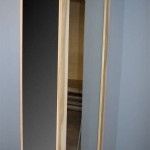The Cost of a Mirror Wall: A Comprehensive Guide
Mirror walls, once relegated to dance studios and gyms, have become a popular design element in residential and commercial spaces alike. Their ability to create the illusion of greater space, enhance natural light, and add a touch of contemporary elegance makes them an attractive option for homeowners, interior designers, and business owners. However, before embarking on a mirror wall project, it is crucial to understand the various factors that influence the overall cost. This article provides a detailed breakdown of the expenses associated with installing a mirror wall, enabling informed decision-making and effective budgeting.
The pricing of a mirror wall is not a fixed value; instead, it is subject to a range of variables that can significantly impact the final expenditure. These variables include the size of the wall, the type of mirror used, the complexity of the installation, the location of the project, and the contractor chosen for the job. A thorough understanding of these factors is essential for accurately estimating the potential cost of your mirror wall and ensuring a successful project execution.
Key Cost Factors: Mirror Type and Size
The type of mirror glass selected directly impacts the overall cost. Standard clear mirror glass is typically the most affordable option. Its widespread availability and straightforward manufacturing process contribute to its lower price point. However, other types of mirror glass offer enhanced aesthetic appeal or functional properties, and these come with corresponding price premiums.
Tinted mirrors, such as bronze, gray, or black, offer a sophisticated and contemporary look. The addition of metallic oxides during the manufacturing process imparts the desired tint, adding to the material cost compared to clear mirrors. Antique mirrors, designed to mimic the aged appearance of vintage mirrors, involve specialized finishing techniques that also increase their price. These techniques may include distressing the silvering on the back of the mirror or applying tinted coatings to create a mottled effect. Low-iron mirrors, characterized by their exceptional clarity and reduced green tint, are ideal for applications where color accuracy is paramount. This improved clarity comes at a higher price than standard clear mirrors.
The thickness of the mirror glass is another crucial consideration. Thicker mirrors are more durable and less prone to warping or distortion, especially when installed on uneven surfaces. While standard mirror thicknesses range from 1/8 inch to 1/4 inch, opting for a thicker glass will naturally increase the material cost. The increased weight of thicker glass also necessitates more robust installation methods and potentially higher labor costs.
The size of the mirror wall project has a linear relationship with the cost of materials. A larger wall requires more mirror glass, which translates to a higher expenditure on the raw materials. Mirror glass is typically priced per square foot, so accurately measuring the wall dimensions is crucial for obtaining an accurate estimate. When calculating the required square footage, it is essential to account for any waste due to cuts or irregular shapes. Irregularly shaped walls or those with architectural features requiring precise cuts will inevitably lead to more waste, increasing the total material cost.
Installation Complexity and Labor Costs
The complexity of the installation process is a significant driver of labor costs. A straightforward installation on a flat, even wall will typically require less labor and time compared to a more challenging scenario. Uneven walls require shimming, leveling, and potentially framing to ensure a smooth and even surface for the mirrors. These additional steps add to the labor hours and, consequently, the overall cost.
Walls with obstructions, such as electrical outlets, light switches, or pipes, require careful cutting and fitting of the mirror panels. These intricate cuts demand greater precision and skill, increasing the time required for installation. Similarly, walls with unusual angles or curves present challenges that demand specialized cutting techniques and potentially custom-made mirror panels. The complexity of these cuts will increase both material and labor expenses.
The installation method also impacts labor costs. Mirrors can be installed using various methods, including adhesive, clips, or a combination of both. Adhesive-only installations are generally faster and less expensive, but they may not be suitable for all types of walls or mirror sizes. Clip installations provide a more secure and durable attachment, particularly for larger mirrors, but they require more precise drilling and alignment, adding to the labor time. The chosen installation method should be appropriate for the mirror size, wall type, and any applicable building codes.
The contractor's experience and expertise also influence labor costs. Experienced installers are typically more efficient and can complete the project faster and with greater accuracy. While their hourly rates may be higher, their proficiency can often result in lower overall project costs due to reduced errors and rework. It is advisable to obtain multiple quotes from different contractors and carefully review their credentials and experience before making a decision.
The location of the project can also influence labor costs. Projects in urban areas or locations with high demand for skilled labor may incur higher labor rates compared to rural areas. Travel time and transportation costs for the contractors and materials can also contribute to the overall expense, especially for projects located far from the contractor's base of operations.
Additional Costs and Considerations
In addition to the cost of the mirror glass and installation labor, several other factors can contribute to the overall expense of a mirror wall project. These include the cost of framing, edge treatments, and any necessary wall preparation.
Framing the mirror wall can add a decorative touch and protect the edges of the mirrors. While framing is not always necessary, it can enhance the aesthetic appeal and provide a more polished look. The cost of framing depends on the type of material used (e.g., wood, metal, or composite) and the complexity of the design. Custom-made frames will generally be more expensive than stock frames.
Edge treatments, such as beveling, polishing, or seaming, can enhance the appearance of the mirror edges and prevent chipping or cracking. Beveled edges create a decorative angled edge, adding depth and dimension to the mirror. Polished edges provide a smooth and refined finish, while seamed edges offer a basic level of protection. The cost of edge treatments varies depending on the chosen technique and the length of the edges being treated.
Wall preparation may be necessary to ensure a smooth and even surface for the mirrors. This may involve patching holes, filling cracks, or sanding down uneven areas. In some cases, it may be necessary to apply a primer or sealant to the wall to improve adhesion and prevent moisture damage. The cost of wall preparation depends on the condition of the existing wall and the extent of the work required.
Permits and inspections may be required for some mirror wall projects, particularly in commercial spaces. The cost of these permits and inspections varies depending on the local building codes and regulations. It is important to check with the local authorities to determine whether any permits are required for your project.
Disposal of old mirrors or construction debris may also incur additional costs. Some contractors include disposal services in their quotes, while others may charge an extra fee for this service. It is important to clarify whether disposal is included in the quote before proceeding with the project.
Finally, it is prudent to factor in a contingency fund to cover any unexpected expenses or unforeseen issues that may arise during the installation process. A contingency fund of 5-10% of the total project cost is generally recommended.
By carefully considering all of these factors, you can develop a realistic budget for your mirror wall project and avoid any unexpected financial surprises. Obtaining multiple quotes from qualified contractors, thoroughly reviewing their proposals, and carefully planning the project scope will contribute to a successful and cost-effective outcome.

How Much Does It Cost To Remove A Wall Mirror 2024 Data

Faqs How Much Do Mirrored Walls Cost And Other Questions

5 Pieces Water Drop Acrylic Wall Decorative Mirrors Com
Mirrored Walls Fairfax County Abc Glass Mirror

10 Mirror Wall Panel Design Ideas Catalogue Know Cost Saving Tips

Are Mirrored Walls Out Of Style Decoholic

Mirror On The Wall Diy Tips For A Budget Friendly

Custom Whole Large Big Arch Metal Framed Gold Full Length Long Dressing Standing Floor Wall Mirror China Bathroom Vanity Made In Com

Wall Mirror Designer Grade Handmade Clearance More Than 50 Off

La Pastiche Sunburst Mother Of Pearl Large 33 In X Classic Round Framed Multi Color Decorative Mirror Ormmop5556l33 The Home Depot








